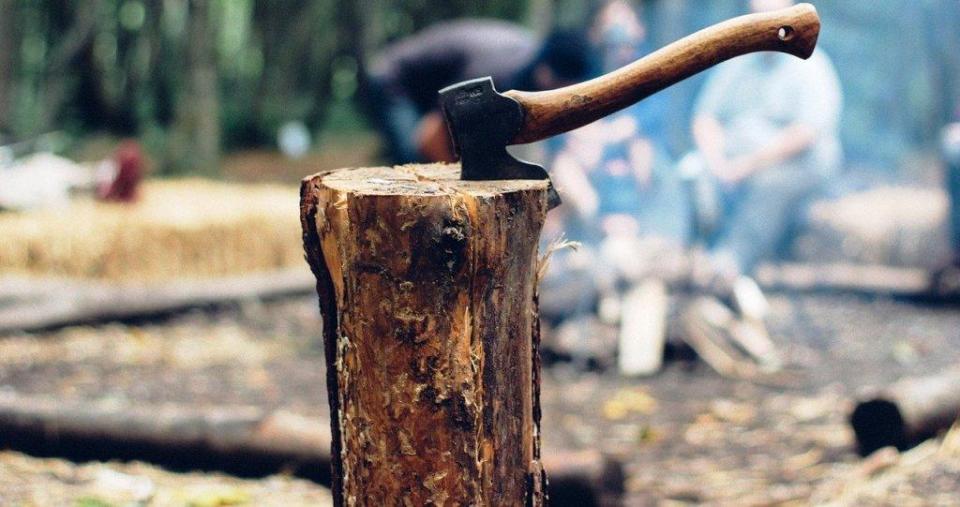How To Regrind And Sharpen An Axe With A Belt Sander

Axes hold great significance in American culture. Axes were one of the few supplies early settlers brought with them to the new world. The story of the mythical American hero Paul Bunyan and his axe has been passed down from generation to generation for over a century. Axes have many practical uses from chopping firewood to clearing out the land. However, they’re just as likely to be used for leisure events like axe throwing competitions.
Such a timeless and iconic tool should be well-kept. Fortunately, if your axe has dulled with time or if it now has chips or gouges, it can be sharpened or reshaped with relative ease. Below, we outline the steps you’ll need to take to sharpen your axe with a belt sander.

Equipment Needed
You don’t need much in the form of equipment for axe sharpening. In fact, you really only need three things:
- A belt grinder
- Safety goggles
- Gloves
- Closed-toe shoes
While the last three items may seem optional, your safety is very important. Sharpening your axe will produce metal filings, which can be sharp and dangerous. There is also always the risk that you may accidentally drop your axe while sharpening. Closed toes shoes will help to protect your feet from metal filings and an accidental axe drop. Safety goggles will also keep debris from flying into your eyes.
Steps To Sharpen An Axe With A Belt Sander
The first thing you’ll need to figure out before you begin grinding is your grit progression for the sanding belts you’ll be using. If all you’re doing is sharpening, you won’t need anything lower than a fine grit belt. You can start with 240-400 grit and then use 800-1000 grit to finish up the edge.
If you need to regrind the axe, you’ll want to start with a coarse grit of around 80. You can then move to a medium grit between 100 and 220 to remove marks before sharpening with the grit progression described above.
When buying belts, you’ll find that there are several different types of abrasive grains: aluminium oxide, zirconia, silicon carbide, ceramic, etc. Aluminium oxide is the least expensive type of grain you can buy, but it also doesn’t last very long. The best belts on the market for metalworking are currently ceramic sanding belts. Ceramic belts are designed for high-pressure grinding on steels and other metals. Ceramic belts also have heat mitigating properties, which is important.
To begin sharpening your axe, you’ll start your belt grinder and place the edge of the axe onto the belt while applying some pressure. You’ll begin slowly rotating the axe along the belt so that you can grind the entire edge of the axe. When you’re rotating the axe on the sanding belt, you’ll want to use a semi-circle rotation derived from the centre of the axe blade. This will ensure that you get a nice, consistent curve in the blade bevel line.
The largest concern with sharpening your axe via a belt sander is accidentally ruining the temper. Too much heat could cause your blade to lose some of its hardness. To avoid excessive heat build-up, you’ll want to stop sanding for a few seconds every 30-45 seconds.



